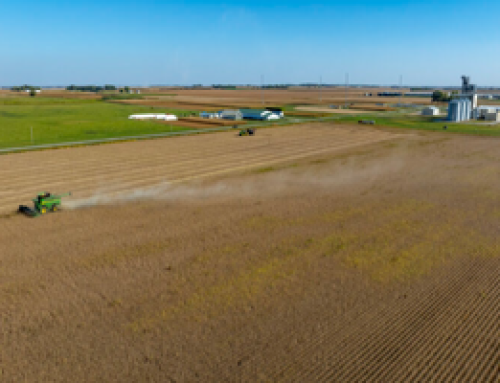By Carl Zulauf, Department of Agricultural, Environmental and Development Economics, Ohio State University and Joana Colussi, Nick Paulson, and Gary Schnitkey, Department of Agricultural and Consumer Economics, University of Illinois
Yield growth is critical to increasing crop output in the United States. US harvested land has been stable during the 21st Century and thus has not contributed to increasing US crop output (see farmdoc daily March 6, 2024). This study finds US yield growth varies by measure, crop, and comparative benchmark. Combined feed grain, food grain, and oilseed yield increased more for the US than any world region when measured in physical output units, but was in the middle when measured as percent increase. The US has a yield growth advantage in some crops, notably peanuts and soybeans; but for most crops lags the rest of the world, especially in percent increase. See data note.
Data
Average yield of feed grains, food grains, and oilseeds in 2000-2002 and 2020-2022 are compared for the US and the rest of the world (i.e. world excluding the US) using data from the Production, Supply, and Distribution Online (PSD) database (US Department of Agriculture, Foreign Agriculture Service). Feed grains are barley, corn, millet, oats, and sorghum. Food grains are rice, rye, and wheat. Oilseeds are cottonseed, peanuts, rapeseed, soybeans, and sunflowers. For a list of countries in each world region, see https://apps.fas.usda.gov/psdonline/app/index.html#/app/about.
Yield’s Relative Role in Increasing Production
Calculating yield’s role in increasing crop output involves (1) multiplying the change in average yield over 2000-2002 to 2020-2022 by average annual harvested acres in 2000-2002 (i.e. the start of the period), then (2) comparing this multiplicative product to the total change in production over the period. The calculation was made for the combined yield of the 13 feed grains, food grains, and oilseeds.
Increasing yield explained all US and EU (European Union) growth since 2000 in combined feed grain, food grain, and oilseed output (see Figure 1) as their harvested land did not increase (see farmdoc daily March 6, 2024). Yield accounted for two-thirds to three-quarters of the growth in combined output in South Asia, East Asia, Southeast Asia, and the collective category, “other regions.” Yield was the majority factor in the Former Soviet Union, but land was the majority factor in Sub-Saharan Africa and South America.
The percentages in Figure 1 are yield’s minimum contribution (excluding the US and EU). Yield’s total contribution also includes the interaction effect between growth in yield and growth in harvested land. Since 2000, harvested land has increased in every region, including North America, except the EU (see farmdoc daily March 6, 2024). Note, in all figures in this study, North America includes the US.
Growth in Combined Yield by Region
Besides North America, only East Asia had a growth in combined yield that exceeded one metric ton per hectare between 2000-2002 and 2020-2022 (see Figure 2). The US combined yield growth of 1.6 metric tons per hectare was close to, if not double or more, the growth for all other regions. Physical unit yield growth was smallest in Southeast Asia and Sub-Saharan Africa (0.5 and 0.4 metric ton per hectare, respectively).




